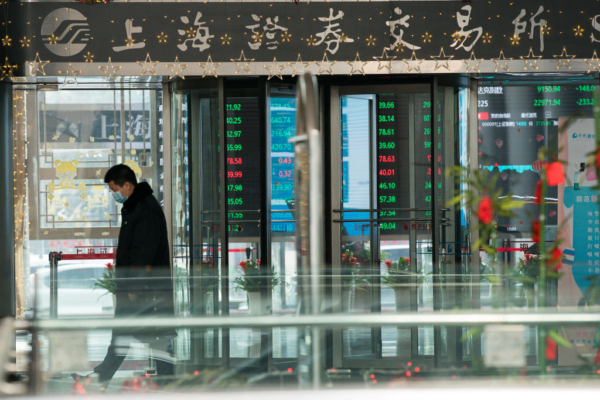After the roundtable meeting for private enterprises hosted by the Chinese Communist Party leader Xi Jinping, the A-share market experienced a general decline the following day on February 18th. More than 4600 individual stocks showed a downward trend, with all three major indices collectively falling.
On February 18th, the three major A-share indices weakened together. At the close, the Shanghai Composite Index fell by 0.93% to 3324.49 points, the Shenzhen Component Index dropped by 1.61% to 10617.26 points, the Growth Enterprise Index decreased by 1.98% to 2182.57 points, and the ChiNext Index fell by 2.26%. The total turnover of the Shanghai and Shenzhen stock markets reached 1.7991 trillion yuan (RMB), a decrease of 142.4 billion yuan from the previous day.
In terms of individual stocks, 4626 stocks saw declines while only 731 stocks saw gains. In terms of sectors, stocks related to AI education, medical applications, media and entertainment, retail, and DeepSeek concept stocks led the decliners, while battery, banking, and gold-related stocks performed comparatively better.
Regarding capital flows, the main funds of both markets recorded a net outflow of 86.261 billion yuan throughout the day. Only two industries saw net inflows of main funds – the banking industry with a net inflow of 799 million yuan and the construction materials industry with a net inflow of 2.22 billion yuan.
There were 29 industries with net outflows of main funds, with the computer industry having the largest net outflow of 20.283 billion yuan for the day. Following that was the electronics industry with a net outflow of 13.546 billion yuan. Other industries with significant outflows included media, communications, and pharmaceuticals.
According to a report by the Securities Times, market analysts pointed out that institutional investors generally believe that the technology industry is a “rare track that can transcend economic cycles.” Despite the short-term strong performance of tech stocks, attention should be paid to three aspects: the deviation between valuation and profitability, geopolitical and supply chain disruptions, and the uncertainty of technological roadmaps.
A prominent A-share blogger, known as “Shenzhen Jin Changyang,” expressed in a blog post: “The market’s direction for A-shares on Tuesday left not only retail investors bewildered, but also speculative and foreign investors in a daze! The entire A-share market, both internally and externally, had high expectations for A-shares this week to rise and perform well, yet a certain team controlling the market took a different approach, leaving everyone astonished! Those in the market had no choice but to sell off in the face of the sharp sell-off in the afternoon…”
The day prior, on the 17th, Chinese Communist Party leader Xi Jinping chaired a roundtable for private enterprises, where it was mentioned that “the prospects for the development of the private economy are broad.” On the 18th, Chinese official media outlets were overwhelmingly positive in their coverage.
An article in Lianhe Zaobao cited the views of Shen Meng, Executive Director of Vanda Research, who believes that based on Xinhua News Agency’s coverage, the issues discussed during the roundtable for private enterprises seemed to stick to the same old topics, without providing a clear roadmap for addressing the challenges faced by the private economy.
Recently, Wanghe, a columnist for the Epoch Times, analyzed and pointed out that the Chinese stock market is facing difficulties in stabilizing due to multiple constraints.
One of the major constraints is the high level of uncertainty in the Chinese situation, with economic volatility, intense political infighting, and boiling social grievances leading to a serious lack of confidence. As the saying goes in the stock market: “There is never a lack of funds in the stock market, but rather a lack of investor confidence.” This constitutes the ultimate constraint on stabilizing the stock market.

